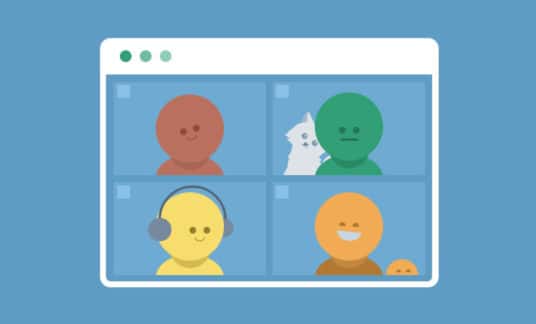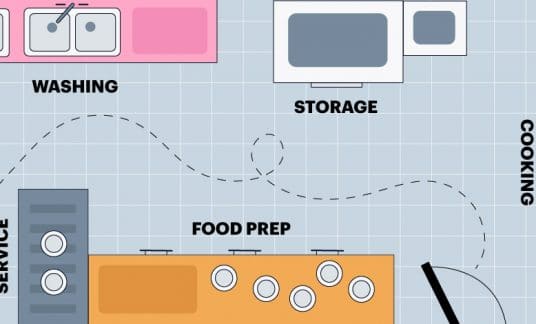Does your process for onboarding new employees need revamping? A strategic approach can increase engagement levels and ensure employee satisfaction, whereas a less cohesive plan can end up costing you money.
Improve your system by following these 6 steps to create a new employee onboarding process.
1. Determine How Onboarding Fits Into Your Business
Many small businesses can produce a sample onboarding plan for new employees, but few can explain the nuances of each step. Moreover, Hewitt Associates and the Human Capital Institute’s “The State of Talent Management” states “20% consistently use a systematic onboarding process for new hires across the entire organization.”
Before you can improve your program, it’s essential to understand how onboarding fits into your organization.
Onboarding vs. Orientation
Onboarding starts the day a new candidate accepts a job offer. In contrast, employee orientation is one stage of the onboarding process that usually begins with the first day of work.
During orientation, human resources (HR) professionals welcome new team members, review schedule requirements, go over benefits and complete paperwork. Orientation may last 1 day or a week.
However, onboarding can last up to a year and happen multiple times during an employee’s career. Onboarding is the process of providing workers with:
- The resources and tools required for success
- Performance expectations
- An understanding of job duties and tasks
- A mentor or buddy to shadow
- A career development plan
The Role of a Virtual Onboarding Process
For the sake of business continuity, many small businesses adapted existing systems to onboard employees remotely. But leaders should consider the role of virtual onboarding post-pandemic.
Will you need to reach fully remote, hybrid or otherwise distributed employees? Perhaps, you want to keep your onboarding process on site but have a virtual contingency option.
Your new employee onboarding checklists will differ according to your approach and the program’s structure.
Benefits of an Effective Onboarding Program
Onboarding affects employee engagement, satisfaction and productivity. Companies that prioritize advanced onboarding programs over basic ones have a competitive advantage.
According to SilkRoad’s “U.S. Trends and Applications in Employee Onboarding,” advanced programs achieve 2 to 3 times better outcomes in key areas, such as:
- New hire engagement: 56% advanced versus 26% basic
- New hire readiness: 51% versus 24%
- Time to or level of productivity: 48% versus 25%
- New hire retention: 44% versus 18%
- Prep for future work needs: 44% versus 24%
Furthermore, strategic onboarding processes reduce ongoing administration costs and help employers “compete for and attract critical talent.”

2. Assess Your Existing Onboarding Process
Reviewing your approach can help you uncover barriers to successful outcomes or expose gaps in your methods. HR professionals should evaluate tools, processes and onboarding teams to determine what’s working and where improvements are needed.
Additionally, it’s crucial to appraise your system based on contemporary new employee onboarding best practices for on-site and remote staff.
New Hires vs. Internal Transfers
Most onboarding programs focus on new employees. According to SilkRoad, 78% of HR decision-makers say onboarding “isn’t just for new employees.” However, onboarding for various employee populations is under-utilized, with leaders reporting:
- 52% use onboarding for internal employee transfers
- 51% leverage onboarding for internal worker promotions
- 44% onboard interns or co-op participants
- 41% orientate people from mergers or acquisitions
- 41% onboard staff coming back from leave
- 39% use onboarding for contingent workers
Leaders should identify other opportunities to use an onboarding process to support workers. Doing so can improve transitions and outcomes while keeping your business on track for company-wide goals.
Review Your Onboarding Team and Tools
It’s impossible to improve your system without understanding the purpose of each onboarding element, including tools used for process automation and resource delivery.
Go through the following areas:
- List all touchpoints, starting with a candidate’s first impression of your company
- Document the communication methods used for each onboarding process step
- Write down resources available to new hires and method of delivery
- Identify involvement levels of leadership and management teams
- Examine your onboarding timeline, including start dates and expected end dates
- Gather new hire feedback from onboarding surveys
- Consider how often your plan meets key performance indicators
- Note differences between in-person and virtual onboarding approaches
Identify Areas for Improvement
Once you have a big picture of your onboarding process, think about improving your approach and enhancing the employee experience.
The key areas to consider are:
- Onboarding length of time: Extend onboarding efforts to cover at least the first year.
- Process automation: Update your toolset to streamline systems and improve employee experiences.
- Inclusive learning: Develop methods to account for generational differences and abilities.
- Career growth: Strengthen career development throughout the onboarding process.
- Mission-driven: Emphasize company culture by ensuring your approach matches your values.
3. Create Goals for Your Employee Onboarding Process
The 2 main ways to measure an onboarding program’s success are employee retention and employee engagement rates. However, your company may use other key performance indicators, such as:
- Time to productivity: The time it takes for an employee to work independently.
- New hire turnover: The turnover rate for employees at the 1- to 2-year mark.
- Role related: Outcomes related to the job position, such as customer satisfaction.
Also, look at manager feedback, onboarding survey responses and new hire performance rates. Develop performance benchmarks and ensure accountability by assigning responsibility to managers.
Map the Employee Onboarding Process Flow
Use a flow chart or timeline to visually express your onboarding process. To maximize effectiveness, create new employee onboarding checklists for various positions.
Pre-Boarding Phase
The pre-boarding stage occurs once you have an offer of acceptance. It should set up the new team member for success before they even walk through your doors.
Take these steps before your employee clocks into work:
- Send an invite for your company’s communication application
- Provide information about required documents or dress code
- If necessary, give instructions for parking or directions for checking in
- Offer an agenda or schedule for the first day of work
- Assign logins and access permissions for scheduling and payroll systems
- Have your new employee’s mentor or buddy reach out via email or text
- Set up the employee workstation or provisions for equipment
- Alert co-workers about the arrival of a new team member
Orientation: First Day or First Week
What does your employee’s first day look like? Who do they meet, and where do they go? Although some aspects may overlap with your onboarding process, orientation is just one part of your ongoing efforts. Orientation steps may include:
- Tax forms and paperwork
- Sign-up for benefits
- A review of your compensation plan
- Log into workstations and applications
- Go over company policies and procedures
- Give introductions to teams and leaders
- A tour of the office
First Month up to 90-Days
Collaborate with your new employee to create a 30-day plan. It should consist of a team bonding activity for your new hire and co-workers, a meeting with a manager, performance goals and a list of people to connect with.
Give new employees access to resources, including self-service options and personalized onboarding sessions, covering topics, such as:
- Organization mission, values and goals
- Individual or team objectives
- Company culture
- Code of conduct
- Payroll and benefits
- Scheduling
- Organizational structure
- Software training
- Role-specific training
Don’t forget to schedule regular meetings to ask for and give feedback, share an onboarding survey and ask about potential challenges. Workers should feel comfortable speaking about their experience and observations.
Automate Your Onboarding Checklist
Although you can complete an onboarding checklist on a spreadsheet, use onboarding software or project management tools for best results. These systems often provide an onboarding template and give management and new hires a transparent view of their progress.
Onboarding tools can help get employees acclimated and encourage them to explore company resources at their own pace.
Here are a few examples of how an onboarding platform can assist new employees:
- Gives new hires one space to find links to compliance and benefits documents
- Shows expectations for the first week or month of work
- Integrates with a calendar, making it easier to set up networking opportunities
- Includes contact information for various departments
- Allows the team member to access non-proprietary data on a personal device
- Supports electronic signatures for documents
- Managers can set up automatic reminders for check-in points
Follow Employee Onboarding Best Practices
Strategic onboarding practices can help you develop and retain a diverse workforce. Disparate experiences can reflect poorly on your reputation and lead to dissatisfaction or infighting among various departments. Ensure frictionless interactions by following employee onboarding best practices.
Provide Multigenerational Support
Today’s workforce has four distinct generations working together. Each group may have different learning styles and priorities. To build an age-diverse workforce and inclusive culture, it’s critical to tailor your strategies to support individuals of varying talents and needs.
Enable Effective Communications
Encouraging frequent discussions and respecting communication preferences can help you improve the employee experience. Furthermore, keeping leaders and managers involved in regular conversations with staff can reduce work turnover.
Deloitte’s “Talent 2020” report finds that 62% of employees who plan to stay in their jobs “report their employers communicate effectively, while 66% of those who plan to leave feel that communications have been ineffective.”
Prioritize Connections
To effectively integrate into your company culture, it’s essential to connect workers to the right people and resources. Ensuring consistent interactions can improve employee satisfaction and engagement levels. Developing professional relationships is an ongoing process that lasts far beyond the 90-day onboarding period.
Onboarding New Employees: Design an Immersive Experience
Having a checklist, goals and the right software can make it easier to acclimate new hires quickly and even save money in the long run.
With a strategic onboarding process, you can make your remote or on-site employee feel at home from day 1 while overcoming HR challenges holding your company back from growth.











